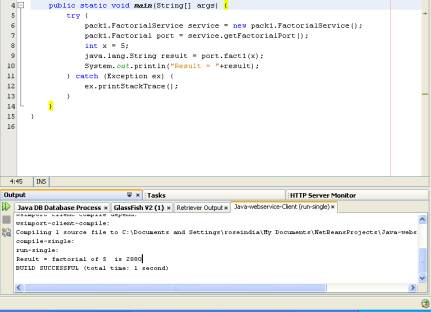
- #JAVA 11 HTTP CLIENT EXAMPLE HOW TO#
- #JAVA 11 HTTP CLIENT EXAMPLE SOFTWARE#
- #JAVA 11 HTTP CLIENT EXAMPLE CODE#
Example below: HttpGet getMethod = new HttpGet( " HttpResponse response = httpClient.execute(getMethod) 4 – Usage of the HttpClientĪfter configuring the HttpClient, it is pretty straightforward to use it to make HTTP calls in your application.

Therefore, in my view, this is the RECOMMENDED to configure HttpClient timeout properties in your application. This is a type-safe way to assigning the properties in a clean and error-free way. HttpClientBuilder.create().setDefaultRequestConfig(config).build() setSocketTimeout(timeout * 1000).build() setConnectionRequestTimeout(timeout * 1000) RequestConfig config = RequestConfig.custom() See the below example for reference: int timeout = 5 With version 4.3, we have a much better way of setting the timeout properties. 3 – Configuring Java HTTPClient Timeout Properties (the New Way) The properties CoreConnectionPNames are part of the package. The timeout is provided in milliseconds and therefore, we multiple the value by 1000. Here, we have setup the three parameters in the HttpClient object. 2 – Configuring HTTPClient Timeout Timeouts (the Old Fashioned Way)īefore version 4.3, we had to use normal parameters using generic map to configure HttpClient. However, in high load scenarios, we also need to be careful about properly setting the third timeout as well. In general, the first two parameters are the most important. This timeout deals with the time taken to receive an open connection from the pool. Connection Manager Timeout – Many hosts use a pool of connections to handle concurrent requests.In other words, it is the time between receiving two packets of data. Socket Timeout – This is the time spent waiting for the data after the connection with the remote host has been established.Connection Timeout – The time taken to establish the connection with a remote host.Mainly, there are three types of timeout properties that we can play around with:
#JAVA 11 HTTP CLIENT EXAMPLE HOW TO#
In this post, we will look at how to use configure Java HttpClient timeout properties. Therefore, it is imperative that we make appropriate use of Timeouts when designing HTTP calls in our applications. A user waiting for a response for an abnormally long time would be far more devastating to the business prospects of the application as compared to a failed response.
#JAVA 11 HTTP CLIENT EXAMPLE SOFTWARE#
However, this is usually not the case in a typical software application.

In real-life we may be tempted to wait for a long time for a response. So what should be a developer do in this case? However, just like in real life, a request is just a request and there is no guarantee a request would receive an appropriate response. If (resp.HTTP Request is a common integration approach used for building any reasonably sized application. TryResend(HttpClient client, HttpRequest request, BodyHandler handler, thenComposeAsync(r -> tryResend(client, request, handler, 1, r)) HttpRequest request = HttpRequest.newBuilder() HttpClient client = HttpClient.newHttpClient()

I'd suggest to do something along these lines instead (assuming no security manager): public static int MAX_RESEND = 10

There is handleAsync but it does not compose, the lambda is required to return U and not CompletionStage there.įor the sake of QA, I am also interested in answers that show how to achieve this with other frameworks, but I wont accept them.įor example, I have seen a library called Failsafe which might offer an elegant solution to this (see /failsafe).įor reference, here are some related JavaDoc links: Unfortunately there does not seem to be any composeAsync that triggers for both, regular completion and exceptional. CompletableFuture> task = ndAsync(request, bodyHandler) įor (int i = 0 i response.statusCode() = 200 ?ĬpletedFuture(response) :Īnd if we add retries for exceptional cases as well, I end up with CompletableFuture> task = ndAsync(request, bodyHandler)
#JAVA 11 HTTP CLIENT EXAMPLE CODE#
Lets say I want to retry a request up to 10 times if it did not return a status code of 200 or threw an exception.Ĭurrently I am composing the returned future with re-schedules in a loop and I am wondering whether there might be a better or more elegant way. Using HttpClient from Java 11 (JDK, not Apache), how can I retry requests?


 0 kommentar(er)
0 kommentar(er)
